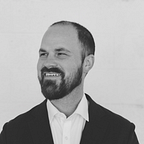The earliest EHR’s date back more than 25 years. When we were all playing Super Mario Bro’s, physicians were tracking the first patients on a computer. As the need has grown, so has the software that tracks their prvided care.
The first systems were simple, and built on existing tech. Databases and the code stack were the best for the times. Unfortunately, they are still built on the same systems. Many of the products look stuck in a pre-internet state.
1993 called, it wants its EHR back.
As nearly every Physician has a smartphone, has used a tablet, or even traversed the interwebs and likely thru google at some point, they are asking why can’t my software be more like this?
The problem: EHR’s are out dated, slow, and generally inhospitable.
The answer: It hasn’t been good for business.
What is changing?
Governments, Lobbyists, and CEO’s are starting to listen to the Physicians. The existing systems are trying to right the ship, but this is taking erroneous amounts of time, effort & money.
Factors like patient safety, clinical decision support, and regulation of care are forcing EHR’s to evaluate the state of their products.
What Medhost is doing?
Medhost is taking action. Under a new directive they are creating a new type of EHR. It is based on workflows first. The approach, direction, purpose, and features are based on the perspective of the Physician. The new EHR (Medhost Clinicals) has a modern code stack that is based on JavaScript, HTML, and CSS. The UI is flat and clean, with a large emphasis on traditional typographic rules. The workflows are radically different from the predecessors.
Most dramatically, the previous workflows have been nearly ignored. The previous EHR’s stacked new features together in a kludge of smoke and mirrors with duck tape holding it all together. A Physician would have to navigate between 2 completely separate apps just to review a vital sign, much less copy and paste a vital sign for documentation.
The new workflows are fluid from the login, through the signing of documentation, and completely to ordering care for patients. New features like being able to select and input vitals directly from the chart into a progress note are revolutionary in the space.
User Experience is changing the EHR.
The new directive called for a legitimate User Experience team to guide the Subject Matter Experts and Developers through solid, physician focused workflows. The result has been a breath of fresh air for the end users.
The team is composted of UI designers, Front-End architects, and UX evangelist from many industries to build a new relevant system that will stand out.
We begin with discovering what the physician needs to accomplish. We meet with a Physician Adviory Board to demo and discuss new features. Feedback is weighed against regulations, and possibilities. Then we refine and iterate over many versions of the feature to ensure it will work best with the flow and function of the app.
Our devs then build the system into an atomic based structure to allow for the sharing and reuse of components. Our system will work with any size device or screen.
The UI team has worked under the direction of the UX leads to create a visual language that is clear and quickly comprehensive. With in less that 3 seconds a physician can now determine the state of the patient, what is happening to them and what is needed before they can go home.
Contain the flood of features.
One of the most prevelant concepts coming from the UX team is that the majority wins. This means that many times a feature will be tabled or cut if there is not a high enough expected usage. Whatif-itis can destroy a team’s velocity and burn down in development. We must focus on what is relevant more that what is possible.
You can have a few important things now, or everything never.
Micro features through Macro thinking.
Our teams collective understanding is cohesive around the principle that a solid plan and path of logic can determine the appropriate coarse on smaller problems. If there is an established user expectation, and a clear result after action, this should be repeated and consistant throught the app. Only deviate if there is reason, then assume that chances are you won’t have a good reason.
Next
There is a mountain, then a valley, the more mountains for work to be completed before an EHR can fully support the list of current feature sets in larger EHR’s. However, with a simplified, workflow based approach user adoption is steadily increasing for Medhost’s new product line.
Our team will continue to challenge the idea that medical software is not well crafted, built by trolls under a bridge and bring it into the light of modern, highly usable applications.
